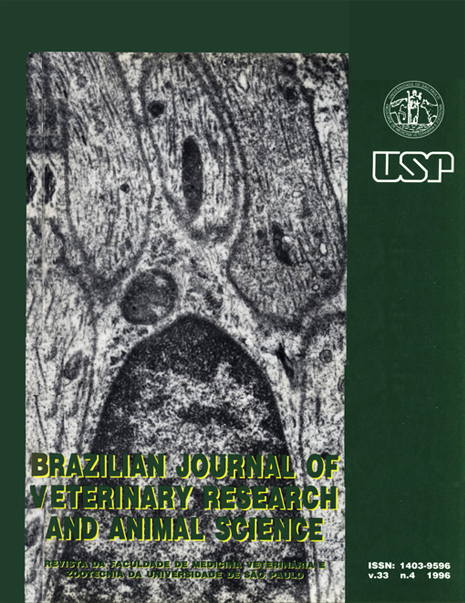Clinical study of intramedullary route as an alternative for fluid administration in young dogs
DOI:
https://doi.org/10.11606/issn.2318-3659.v33i4p235-238Keywords:
Bone marrow, Transfusion, Techniques, Dogs.Abstract
Intramedullary infusion technique was evaluated in 31 dogs less than three months of age, weighing 920 to 3,385 grams and showing no clinical signs of disease. They were randomly divided into group 1 (G1) and group 2 (G2) of 15 and 16 dogs, respectively. G1 received 0.9% NaCI solution and G2 received whole blood. The time necessary to perform intramedullary needle placement, maximum intramedullary infusion rate and any other event observed during the infusion period were recorded. The dogs were clinically evaluated on a daily basis during 30 days and radiographies were taken on days 15 and 30 after the procedure. Intramedullary infusion technique was easilyaccomplished and rapidly performed. Our results show that intramedullary route is safe and may be of great value as an alternative on the treatment of young dogs with critical hemodynamic alterations when the intravenous route is not accessible.
Downloads
Download data is not yet available.
Downloads
Published
1996-12-01
Issue
Section
ANIMAL PATHOLOGY
License
The journal content is authorized under the Creative Commons BY-NC-SA license (summary of the license: https://
How to Cite
1.
Camargo PL de, Ferreira H, Machado CEG, Sturion DJ, Gonzales JRM. Clinical study of intramedullary route as an alternative for fluid administration in young dogs. Braz. J. Vet. Res. Anim. Sci. [Internet]. 1996 Dec. 1 [cited 2024 Apr. 24];33(4):235-8. Available from: https://www.revistas.usp.br/bjvras/article/view/50207





